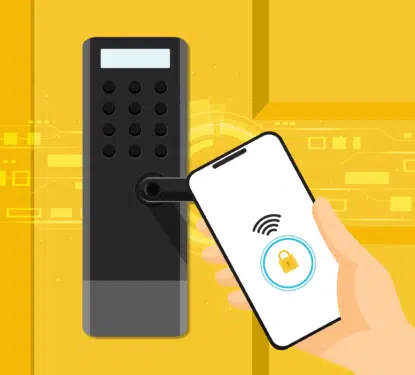Until the late 20th century, people primarily relied on lock-and-key systems to control access in buildings. In the last 40 years, however, we have been introduced with new access control technologies that promise improved security and a range of features that elevate the occupant experience. From various versions of card and fob technology to QR and barcodes, to smartphones and biometrics —each new solution presents unique advantages and disadvantages that have led to their adoption in different access control scenarios. In the 1980s, magnetic stripe cards represented a significant leap over traditional lock-and-key systems in terms of user rights management and traceability. This low-cost, user-friendly technology quickly gained traction, especially for budget-sensitive installations and legacy systems. However, its limited data storage capacity soon became obvious, especially when contrasted with emerging modern alternatives such as smart cards. “While mag-stripe cards still find some application in existing legacy systems, they are on a clear path to obsolescence […]
Most Popular Articles

Podcast 41: Exposed to Secured – MetroNational’s Cybersecurity Journey!
MetroNational’s cybersecurity transformation offers a valuable lesson in getting smart building fundamentals right. In episode 41 of the podcast, Tearle Whitson (VP of Operational Technology at MetroNational) and Rob Murchison (CEO of Intelligent Buildings, LLC) share the lessons from securing a 10 million square foot mixed-use portfolio in West Houston. Like many successful real estate […]

Access Control Market 2025: Shifting to Software-Defined Ecosystems
The physical access control (PACS) market is continuing its transformation from a hardware-centric business focused on locks, card readers, and control panels to a software-driven ecosystem. Cloud platforms, mobile credentials, and artificial intelligence are redefining how organizations manage security, workplace operations, and building intelligence. This transformation represents both significant opportunities and competitive threats across the […]

Siemens Expands Energy Twin Tech with Setmetrics Asset Acquisition
This Research Note explores what’s behind the November 2025 announcement that Siemens has acquired key technology assets of Australian startup, Setmetrics Pty Ltd. We highlight the technology transfer to Brightly Software, following a partnership in Siemens’ Xcelerator ecosystem, before confirming the voluntary liquidation of Setmetrics as an independent entity. Transaction Details Siemens adds key technology […]
